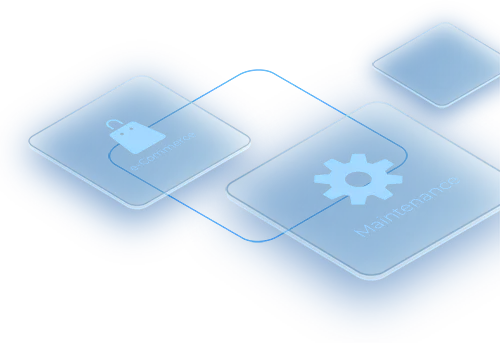The challenges of retaining employees, finding qualified talent, and effectively managing the productivity of remote or hybrid workers while also prioritizing their physical and mental health have all been impacted by these changes in the workforce.
Businesses must adapt to the changing workplace due to the growth of remote work and distributed teams.
Integrating Human Resources (HR) software that can successfully support these new work models is a crucial component of this transition.
The efficient and effective management of distributed teams and remote personnel depends heavily on HR software.
The role of HR and payroll software on remote workforce management is essential for maintaining compliance with tax regulations and policies.
It enables seamless payroll handling for remote businesses, helping them avoid potential penalties and errors.

Challenges in Leading Remote Teams
There are several significant ways that remote work differs from conventional (on-site) work. Employees who work from home are separated from their managers in this situation. While working remotely has many appealing advantages, there are some difficulties as well:
Insufficient Clarity in Expectations
When employees transition to remote work, their understanding of job responsibilities may not translate into clear expectations.
Managers should provide additional guidance on achieving objectives, response time for communication, and virtual meeting participation.
Establishing consistent expectations documenting procedures, and setting boundaries for meeting attendance and after-hours responsiveness are essential practices for managers.
Decreased productivity
For the majority of employees, remote work can boost productivity, but some may struggle without close supervision. They might require more help or creative ways to monitor their time and success.
The perception of low productivity may not be realistic, particularly in hybrid work settings where distant workers are not readily apparent.
Managers should define roles duties, deadlines, and task accountability in order to increase productivity.
Lack of Communication
The regular exchange of ideas and verbal communication that occurs in office settings naturally does not occur in remote work contexts.
Instead, involvement and communication must be planned and with a purpose. Make regular communication a priority and set aside specific times for quick meetings with distant workers.
Share your calendar with others so they can see when you are available. This will help remote workers.
Lack of Unity within the Team
Managers may find it difficult to balance the needs of both on-site and remote workers in hybrid work environments, which could result in unequal benefit distribution.
Managers should strive for fairness by distributing benefits among teams. Find a way to provide remote employees with the same perk, such as providing lunches during meetings if on-site employees do.
Likewise, if remote workers benefit from flexible work schedules, think about extending similar flexibility to on-site workers. Treating office and remote workers equally, eliminate unconscious bias.
Although managing hybrid teams may be different from managing traditional teams, many of the same ideas still hold true.
Effective management has always included good communication; the main change in hybrid teams is that communication has migrated online.
In addition to its obstacles, working remotely has advantages for both businesses and employees.
Its benefits for employers include Increased cost-efficiency, increased productivity, greater employee satisfaction and enhanced corporate social responsibility.
The benefits for employees include a better balance of work and life, more versatility, greater autonomy and freedom, a relaxing environment for work and very less distractions.
The Functions of HR Software in Remote Workforce Management
As you plan for remote teams or remote working arrangements, a capable HR team may take steps to ensure your team’s success.
HR software plays a vital role in managing remote workforces by providing tools for efficient communication, tracking employee performance, and ensuring effective collaboration, all while maintaining employee engagement and productivity.
Every stage of your employee lifecycle from hiring and onboarding to training and development to performance management and reporting is impacted by a good HR system.
Here are some salient advantages of HR and payroll software. The top HR applications include reducing time spent on repetitive tasks, streamlining compliance management, offering a central location for employee data and enhancing team communication.
The Key Components of a Complete HR Program
HR software features include in-app timesheets with GPS for employees to clock in, project management tools to assign tasks and track progress, simplified leave management for both employees and managers.
Automated recruitment and onboarding procedures, performance management features including goal setting and real-time feedback, proficiency for managing training and certifications, reporting options for keeping an eye on employee performance, and integration with other systems.
HRMS enables remote access for employee self-service, allowing employees to conveniently access and manage their personal information, submit leave requests, view pay stubs, and update their details from any location.
Payroll Software for Remote Workforce
Cross-training your payroll team is crucial to ensuring seamless operations when working remotely. You can lessen reliance on a single individual by giving staff the freedom to do different payroll chores independently.
Cross-training ought to include tasks like gathering data on new hires, comprehending employee termination procedures, confirming tax deductions, creating bank files, and meeting payroll submission dates.
Additionally, modify the way you gather input to leave enough time for confirmation and dialogue.
For the purpose of accurately computing employee compensation, especially when they are not physically present in the office, keeping an eye on leave and attendance reports is essential.
To guarantee payroll compliance, encourage personnel to stay current on regulatory requirements. Maintaining a spotless compliance record involves regularly keeping track of governmental updates, budget adjustments, and tax filing deadlines.
By implementing these practices, your payroll team may adjust to remote work and support one another effectively.
The role of HR and payroll software on remote workforce management is to empower HR teams by integrating various functionalities such as cross-training of employees, facilitating effective communication, and allowing for monitoring of leave and attendance data.
This integration results in smooth payroll operations and enhances employee satisfaction.
Best Practices for Remote Workforce Management
To increase collaboration and maximize staff productivity, make the necessary tool investments.
Use screen sharing, video conferencing, automated onboarding software, chat and collaboration tools, HR software with employee self-service, and a recognition and incentive system.
To encourage high employee engagement, and foster strong interpersonal relationships among staff members.
Employees who have strong friendships at work are more likely to interact with clients and internal partners, be more productive, contribute to a safe workplace, exchange creative ideas, and love their jobs.
To ensure compliance and offer clear directions for remote employees, create a thorough remote work policy. Make the policy specific to your business, sector, and employee responsibilities.
Include crucial details like working hours, productivity tips, policy compliance, pay, and equipment needs for a home office.
Conclusion
In conclusion, it is critical for businesses to keep up to date with the most recent developments in the HR and payroll fields in order to not only maintain employee engagement and meet their demands but also to stay one step ahead.
By finding good HR and payroll software you can ensure that your workforce is properly managed.
The development of HR and payroll technology is a critical component of success for a people-driven organization and can be a huge asset in attracting talent as well as positioning the company to potentially take the lead in reimagining the workplace.
The role of HR and payroll software on remote workforce management, such as EBR ERP software, is crucial for ensuring accurate and timely payment processing for employees regardless of their location.








